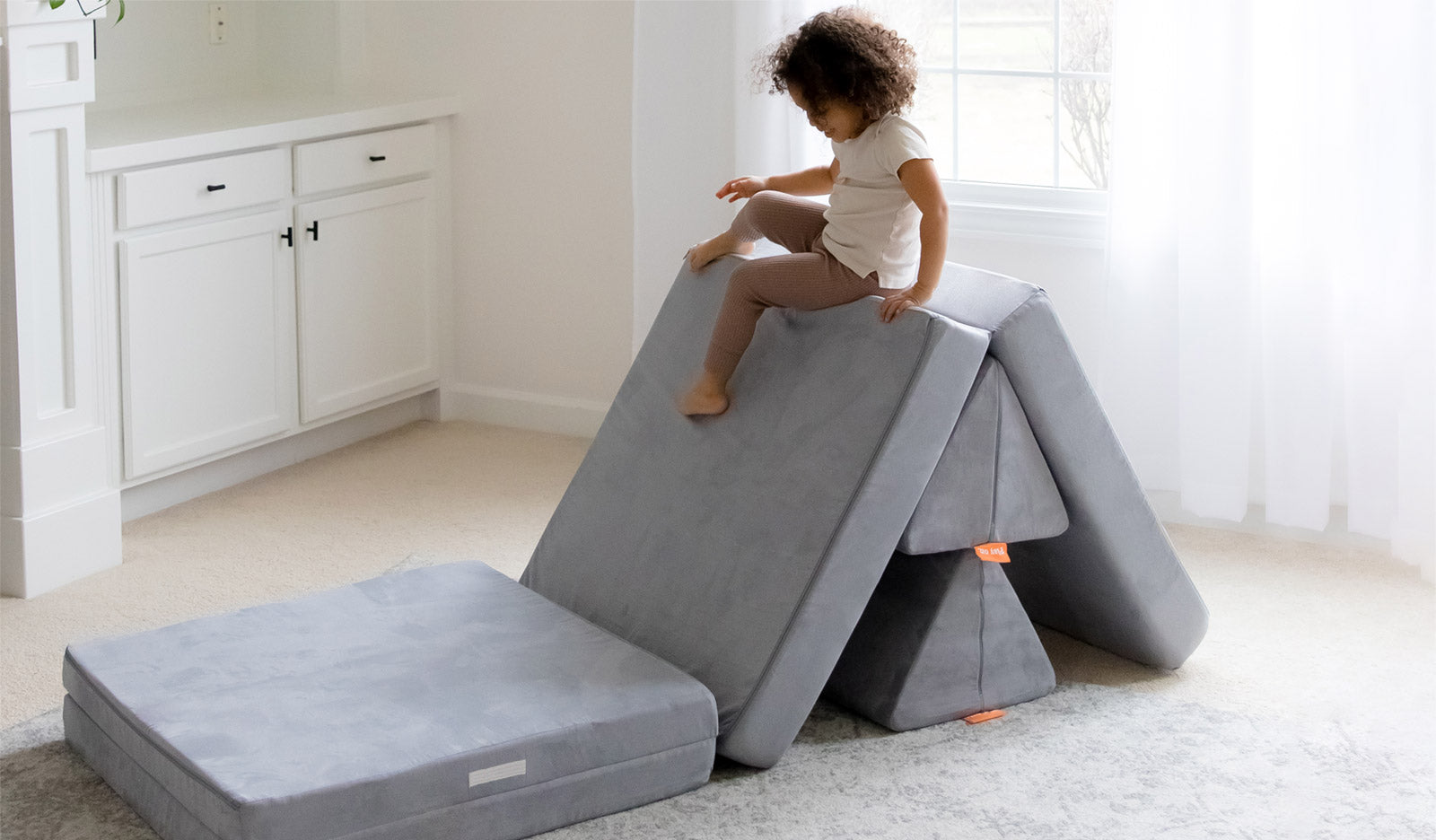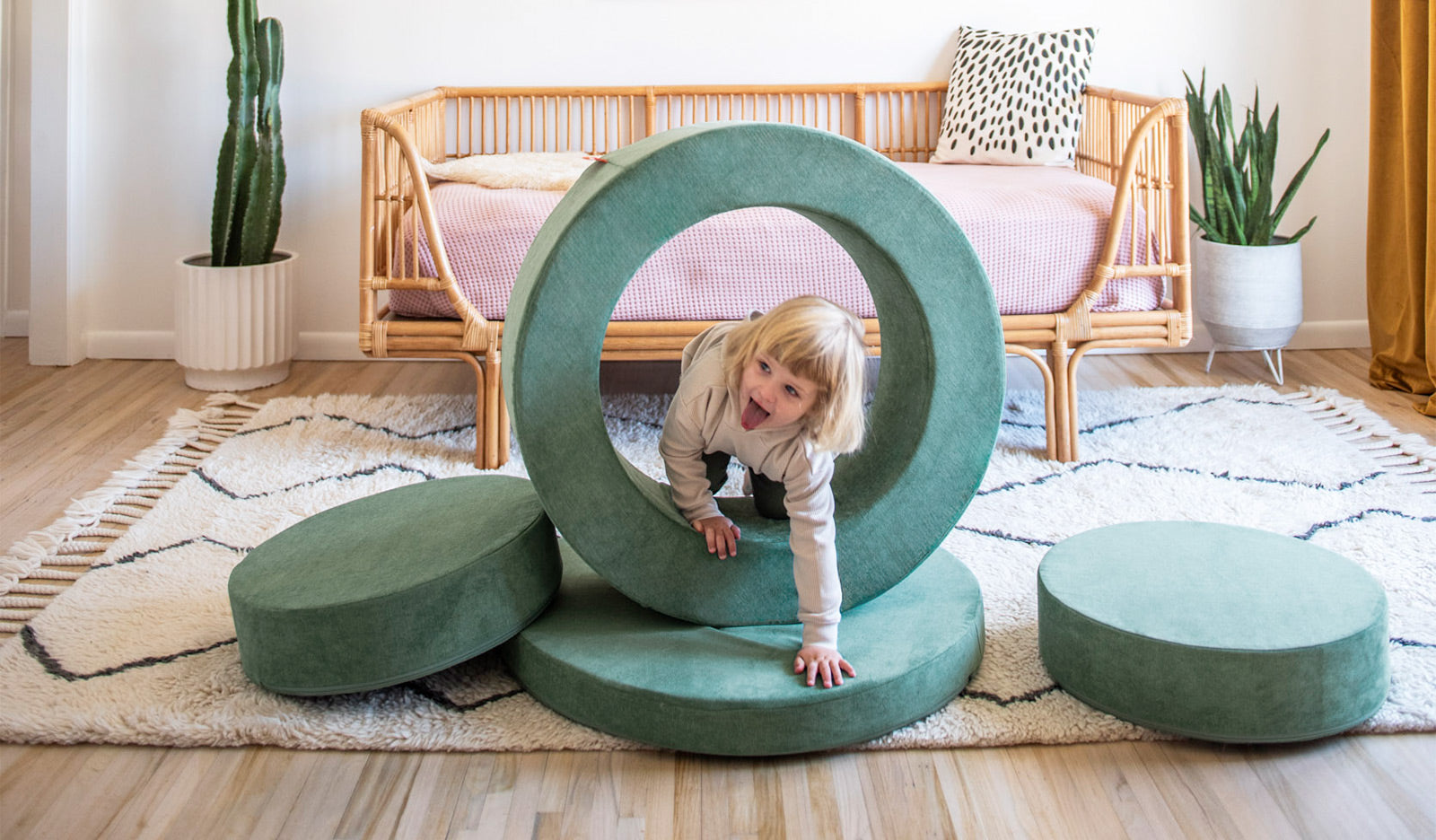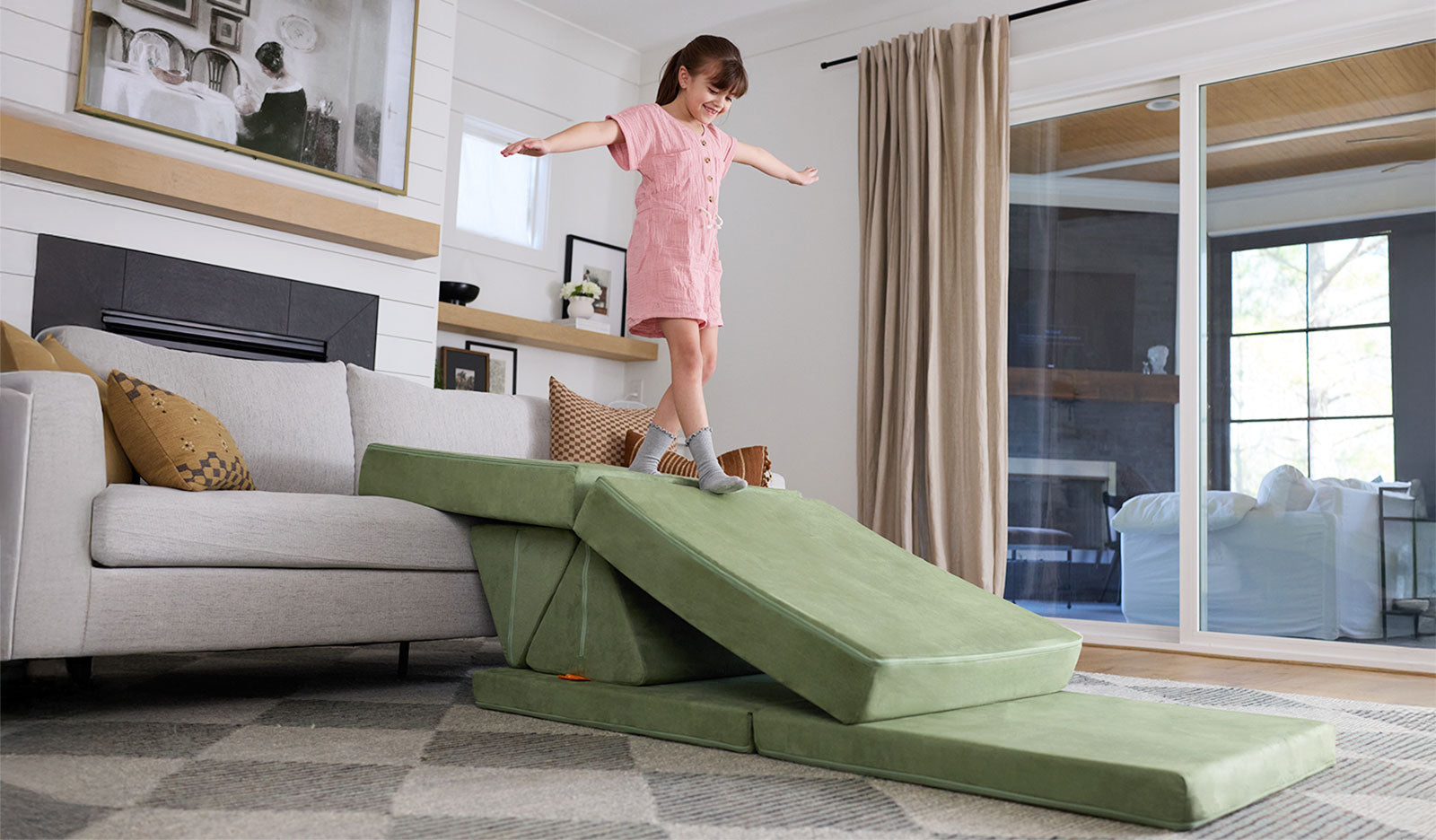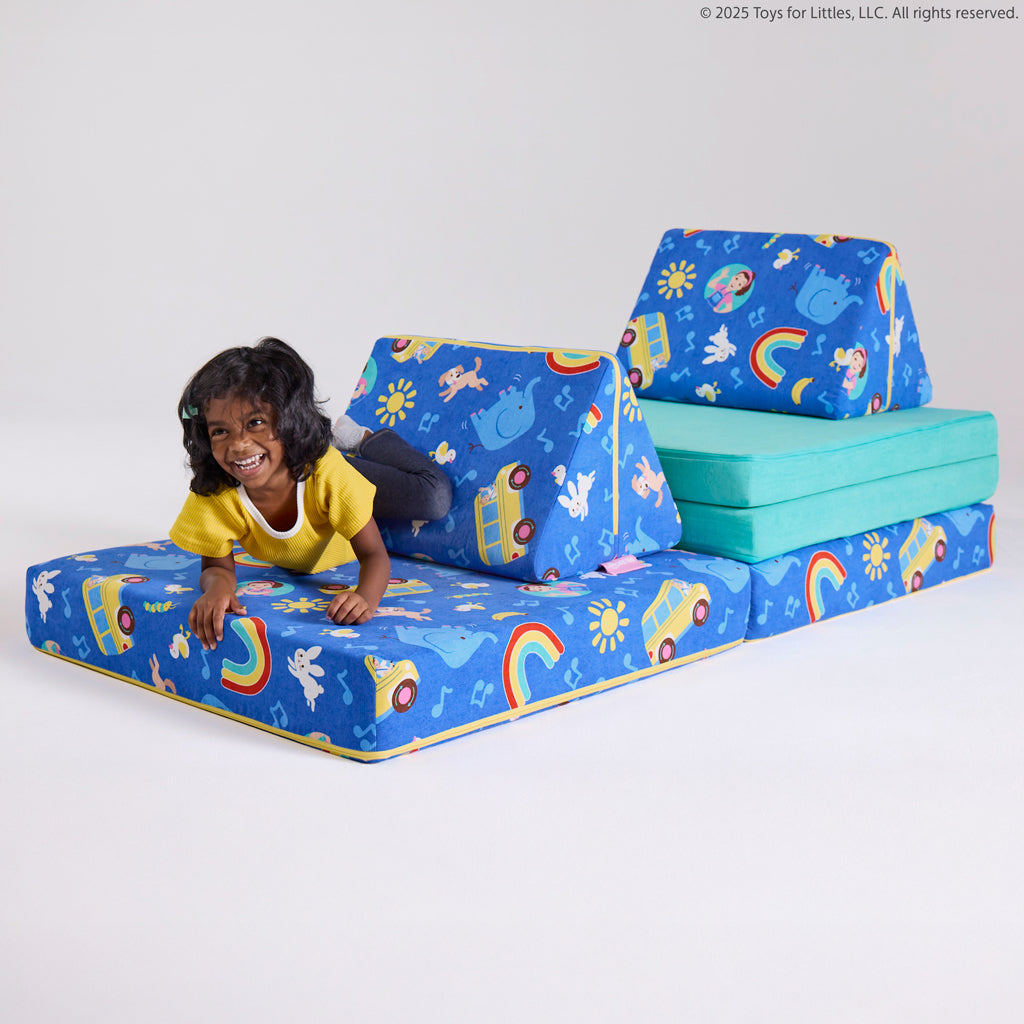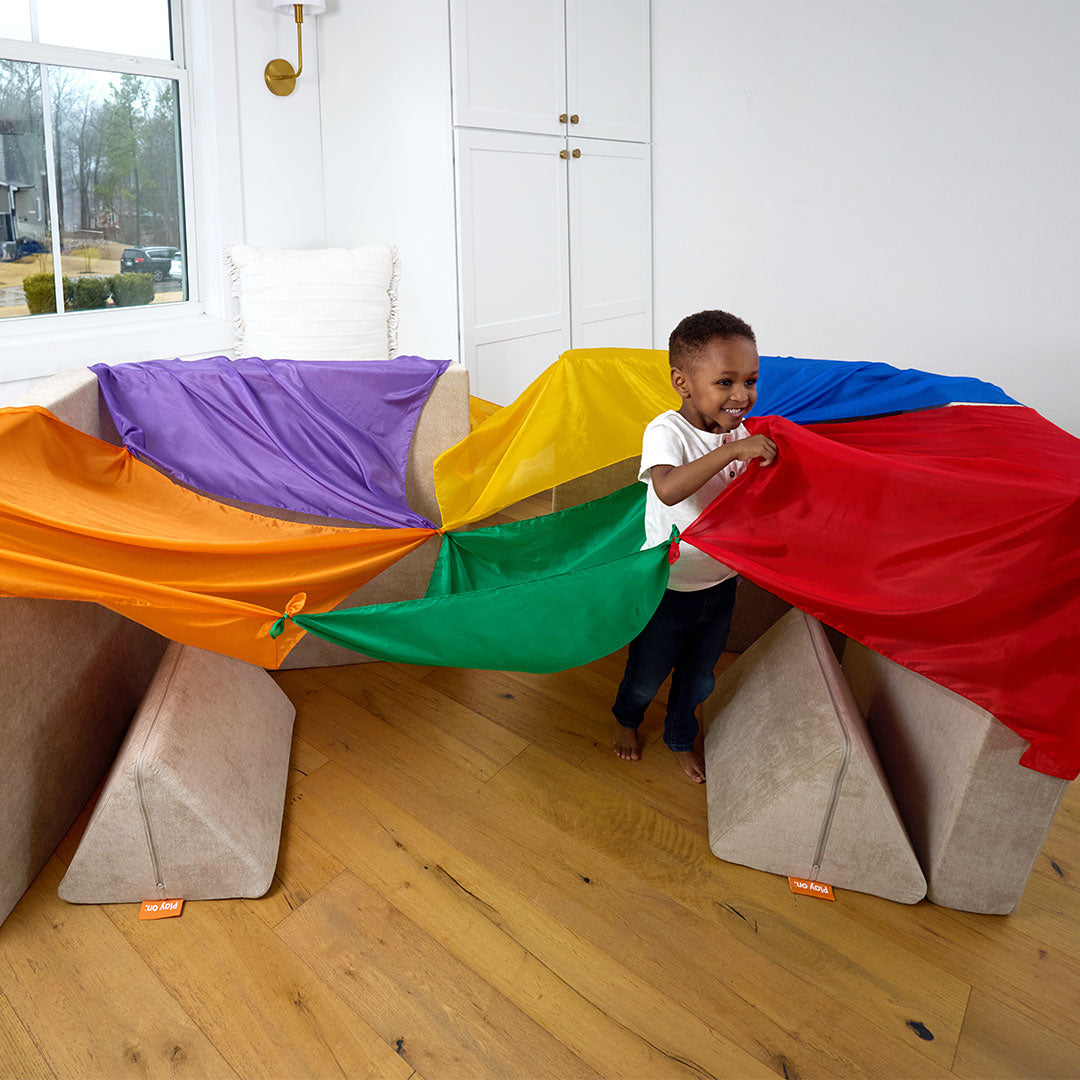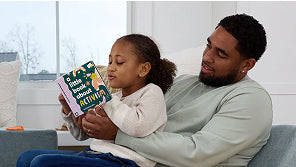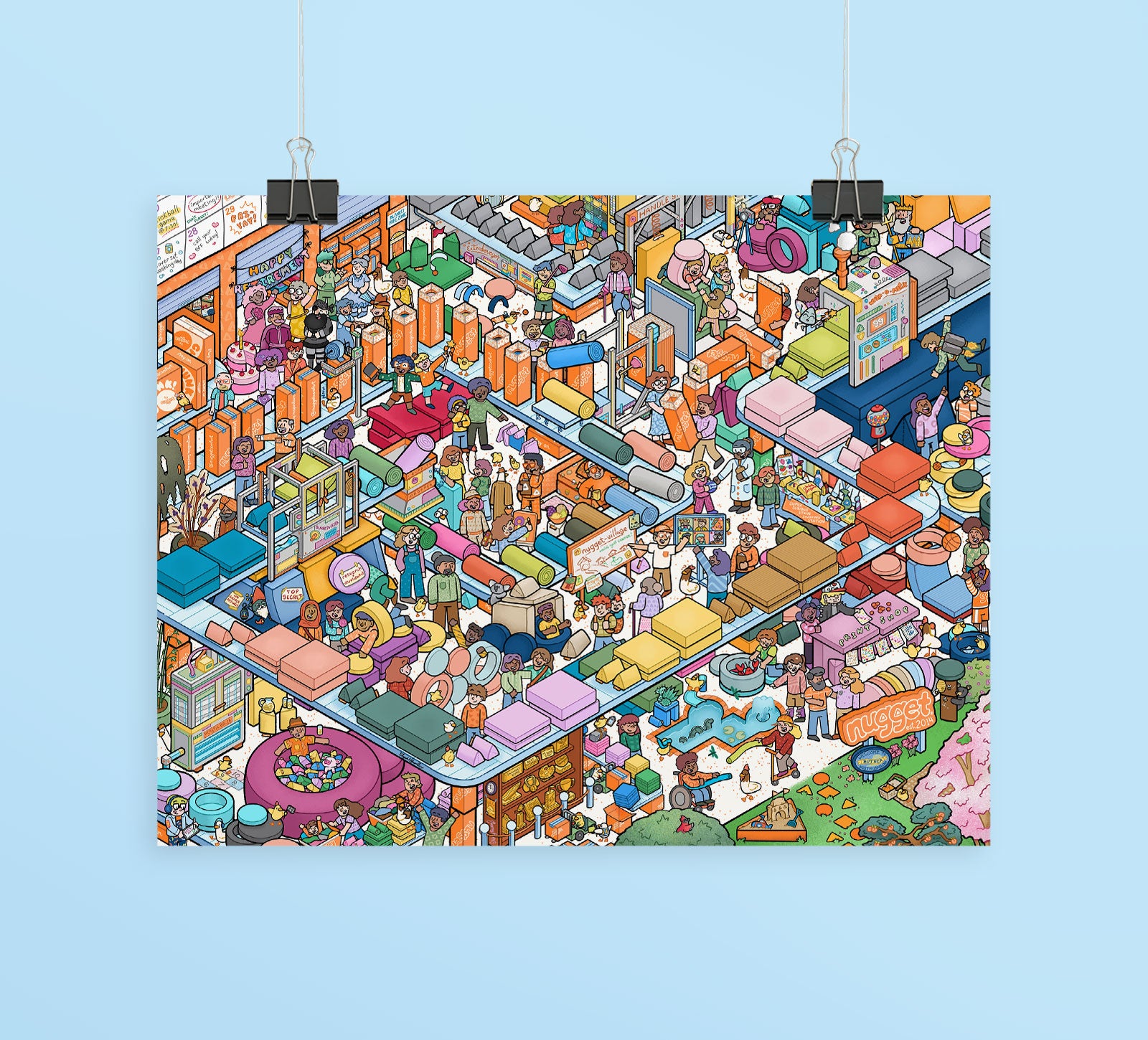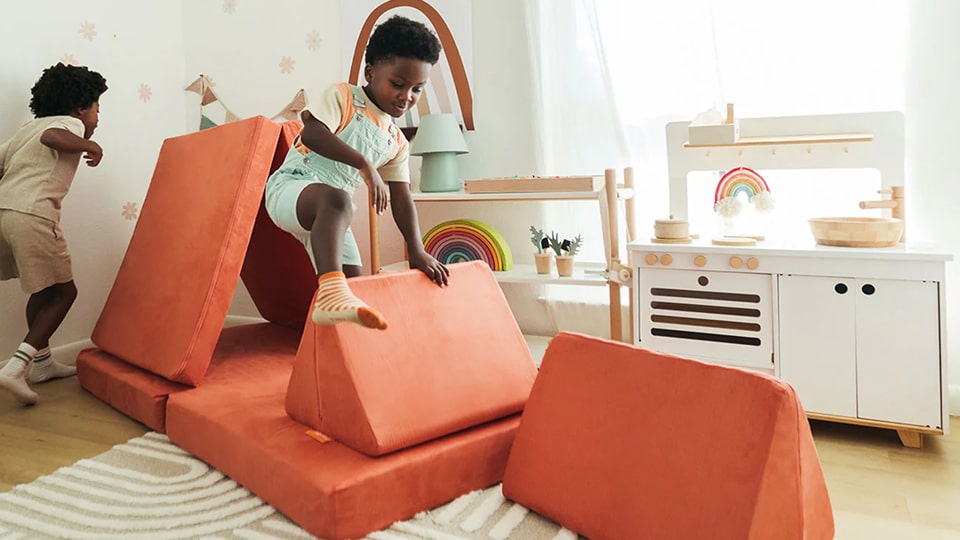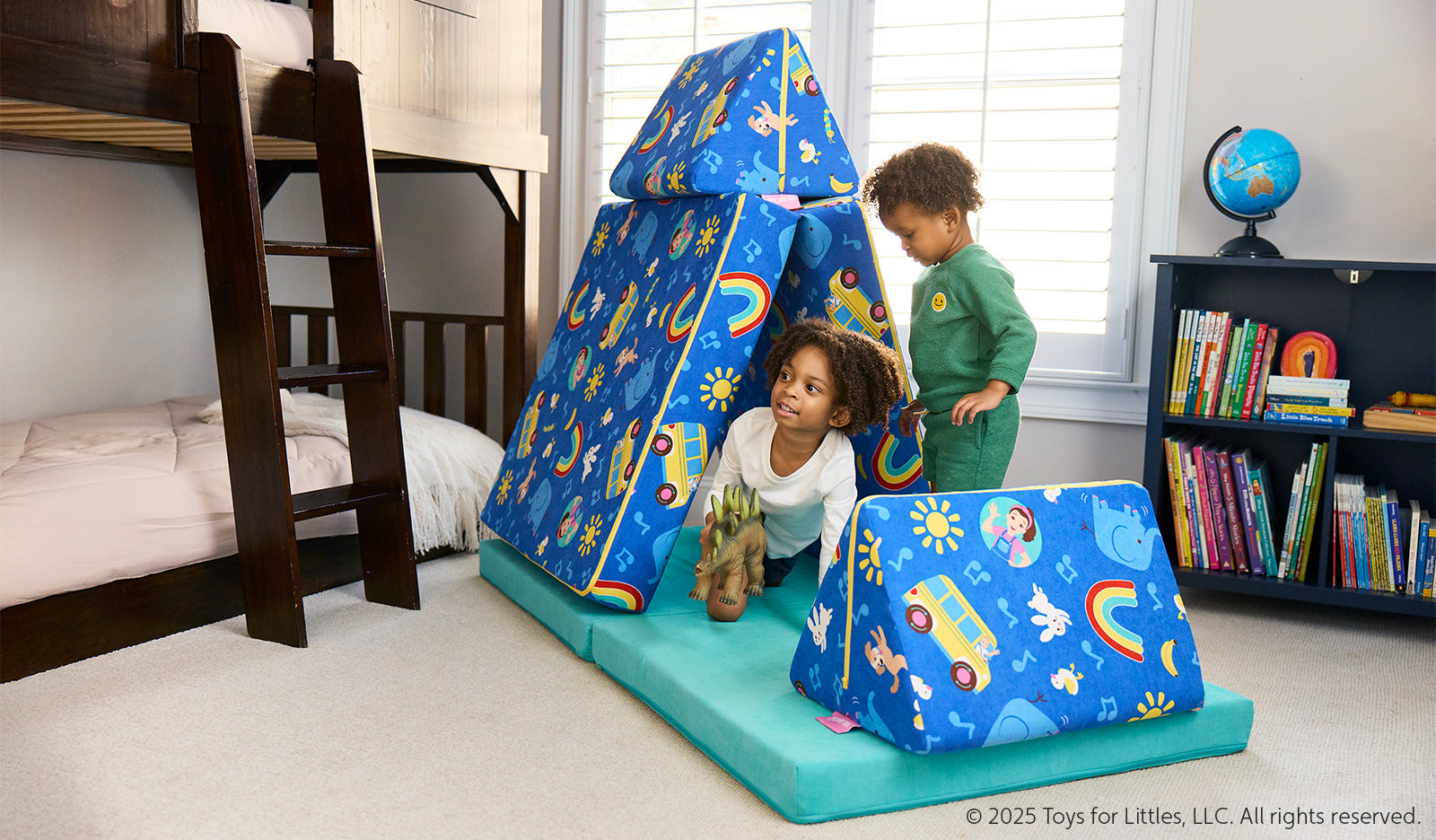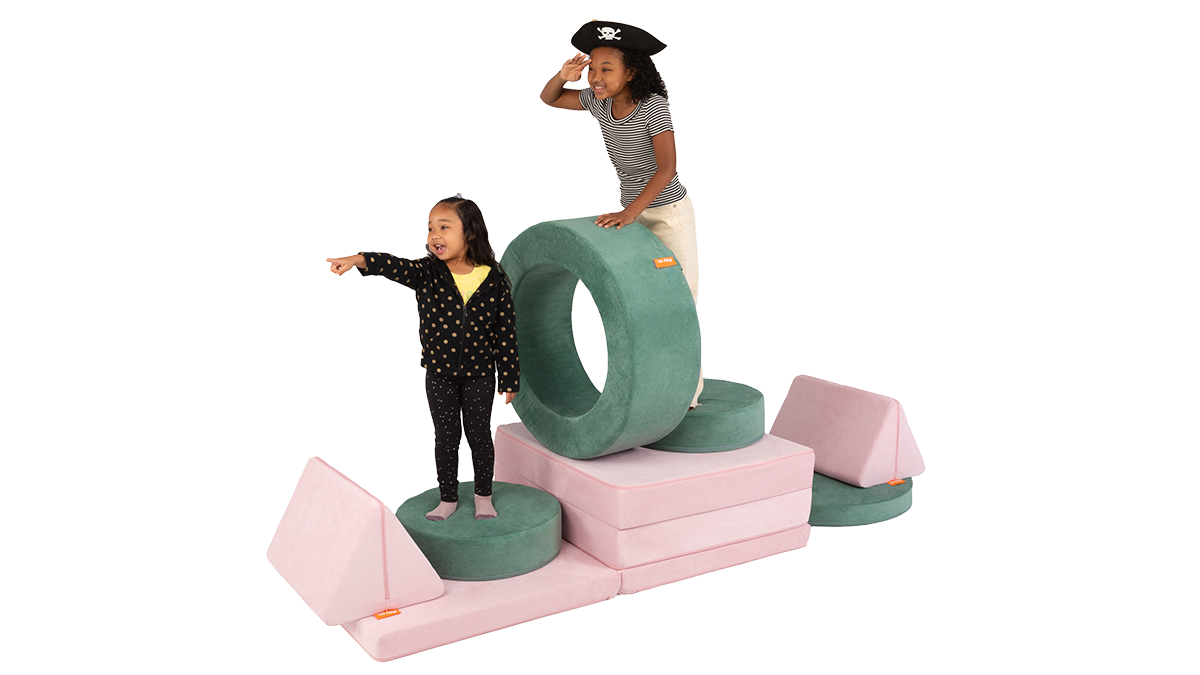The Importance of Play in Building Human Connections

Recently, Content Manager Allie sat down for a Zoom-chat with Dana Winters, Ph.D, Rita McGinley Chair of Early Learning and Children’s Media and Director of Simple Interactions and Academic Programs at the Fred Rogers Center, to chat about Winters’ area of expertise: the power of human connection, and how the act of play can build relationships, foster friendships, and maybe, even be the way forward after the challenges of the COVID-era.
Thanks for taking the time to chat with me. First, could you tell me a bit more about your work at the Fred Rogers Center?
The Fred Rogers Center is located at St. Vincent College, a small liberal arts college in Latrobe, PA. I direct all of our academic programs and supervise the Center’s research lab, Incubator 143, which partners with educators, trainers, advocates, and researchers to focus on identifying and amplifying the simple active ingredient that universally helps serve children—the power of human connection. One of our major initiatives is Simple Interactions, which focuses on affirming and appreciating the importance of human relationships for children.
Another initiative right now is Educators’ Neighborhood, where we bring together educators from all walks of life. We’ve got early childhood educators, camp providers, high school teachers, and others, who have come together in a virtual community to watch episodes of Mister Rogers’ Neighborhood, think about Fred’s life, and then instill those values into their teaching. This is year two of that and it’s growing quicker than expected! It’s fun to see what they can take from Fred as adults and put into practice with their work with kids.
Given your research into the importance of human connection, what do you think the challenging COVID-era isolation and technology use is having on children?
We’d been thinking about a question for a while, and then a year ago, we were forced to think about it much more: what is the role that technologies have been playing in our interactions? We are huge here at the Center on promoting the importance of relationships even in the presence of technology. There’s a lot that technology can do for us, just like there are a lot of things that blocks can do for us, or a book can do for us, but nothing will ever replace the importance of human beings being together. When we think of technologies, what do they afford us while still giving us opportunities to interact?
Oftentimes as we are interacting as parents or caregivers or teachers, we know how to interact around blocks and trains and books, and when it comes to technology, for some reason, we feel like it’s something new. That it’s a tool, that there is “technology time” and “interaction time” and that’s not true. The best use of technology is when it’s used in an interactive way. When we think about what it means to have relationships, well, that technology certainly can provide new opportunities for children to grow, but it won’t connect and be reciprocal with them in a way that a parent or peer could be.

Is there a time that children using technology can facilitate conversation? Absolutely. We have to be open to those questions, and we have to use it in the way so that it doesn’t replace our interactions, but it supplements, or compliments them.
This idea of treating screen time or technology time as one method of play among many reminds me of the conversations that are becoming more prevalent in pediatric nutrition around sugar. A wariness around sugar consumption and isolating sugar from other food groups just puts it on a pedestal; it’s a lot more helpful to put the cookie on the plate with the other food and it’s just another food. This reminds me quite a bit of that approach.
Yes! We know from years and years of watching children develop that if they are doing the same thing repeatedly over and over with the same thing, it doesn’t offer much breadth for development. So, if you have a child who all they want to do is play with blocks and they don't want to engage with books or dramatic play, that too many blocks is a bad thing, too. Just as too much technology or too much sugar can be a bad thing — but those things in moderation, as a part of a human relationship, have value still. It’s not that the value is just sitting there. The value is in how we use it. It’s the value that we give to those tools, not that they have inherent goodness or badness by just existing, but the value we place upon them. Variety is so important to children's development.

Are there different types of play? Is one type better for kids?
When I look at the different types of play, I think it’s less important to name those types and more important that we are seeing how the children are contributing in different ways in different play environments. I’m a mom. I’ve got an 11-year-old and a 7-year-old daughter. Watching them play, it’s about providing them different opportunities to explore different modes of play, whether that be some type of creative play through art, dramatic play through puppets and make believe, play as “future STEM” learning with building... There are a lot of labels that we can give to it.
There’s always going to be arguments about what [kind of play] is best and how much of what to give, but I’m very much of the school of thought that if the caring adults are paying attention and part of that play, we’re going to introduce various things based on what we see our children are doing and needing. Developmentally appropriate will come from seeing what our children are doing and being aware of that.

Some of my friends who work in childcare are learning how to share thoughts instead of share actual things. All types of play — independent play, playing as a group and sharing, serve and return — are all so very important.
Could you elaborate on the term “serve and return”?
Serve and return is a term that comes from literature on responsive caregiving, typically, which we see most predominantly between parents and children. Think of playing tennis: the child serves, adults have a chance to return, and vice versa. It’s a reciprocal exchange. It’s important in parent relationships, where children feel like they have the opportunity to serve and return. It’s also important in peer relationships, for children to lead and follow. When we think of peer relationships, this type of serve and return tends to happen pretty naturally, and it’s something for adults to be more intentional about using opportunities where serve and return is possible.
Could you give an example of how to set this up for a child?
So, say we’re playing and the conversation turns. The child responds to a question, you return it again by extending the conversation.
“What are you playing with?”
“I am playing with my princess.”
“What is her name? What does she like to do?”
Then you’re building a narrative around what it is that we’re doing. It can also be in body language. For babies, who can’t quite have conversational turns yet, we respond to their noises with the same noise, to say “I see you, I hear you.” I’ve been in orphanages where the children who aren’t vocal yet can show their attention by shrugging their shoulders. And when the caregiver turns and shrugs her shoulder back, the child knows that they are seen. It can be that simple. Even that little bit of response there, in busy times, is enough. You can have a moment of connection and bonding in the chaos that is life, you can be someone to witness the child’s experiences.

How can parents support play throughout the day? Human connection is such a valuable part of play, and yet, there are so many other demands on our time.
It’s deeply comforting to me that Fred Rogers did not always see himself as a good parent. He would often talk about how he knew that there were times when he couldn’t give his children undivided attention or everything they wanted, but that he learned that not everything has to be perfect in order to be effective.

There are so many pressures on families. I want to be really intentional in saying: you do not need to make every moment perfect for your child. That is not possible, and honestly, not helpful. Kids learn a lot from their parents not trying to be perfect. They learn that they don’t have to be perfect also. So, when it comes to building play, I sound like a broken record but I go back to those simple moments that are unplanned, that we are able to build opportunities together to play, to explore, be curious about the world. It doesn’t necessarily mean that you have to have one specific type of toy to do that, we can walk outside together and look at rocks! That’s growing and learning through exploration, and isn’t that what play is? It doesn’t have to be one spotlight moment; it can be little moments strung together.
I think part of the challenge of supporting independent play, or answering the question “How do you get your kids to play without you?”, is this idea that play looks a certain way. I’m curious, zooming way out, how would you define play?
It’s exploration, it’s the capacity to look carefully, it’s looking for things that are new inside of things you’ve done forever. There’s so much that goes into it - which is why I’m hesitant to label it as “this kind of play” or “that kind of play.” We can conceptualize nearly everything our children are doing as a form of play. It’s how children come to understand the world. When I think of independent play, I remember being a young mom and being really concerned about it, but independent is a very subjective term when it comes to play. My own children experience “independent” play differently and that’s ok.

It sounds to me like there is just so much opportunity for parents to reframe play from, “This is what the child goes to do,” to instead looking at play as this opportunity for building a relationship between the parent and child.
How often as parents have we heard or said, “Just go play!” It was the thing of childhood, and after that, it shouldn’t cross over into the thing of adulthood. But, when we make it a joint activity between adult and child, it becomes anything we want it to be! It becomes the business of relationship building and bonding, that time together that adults can engage in too. Children don’t see it as just something they do, but it becomes a part of a family and a community. Play is bigger than childhood.
Given this idea that play is not just for childhood, and the power of play in relationship building, could you explain how you interpret the Fred Rogers quote that says “Play is the work of childhood.”?
It is easy to look at play and think it’s something that isn’t important to the development of children. He was pushing back with that, saying that no, play is the most important thing that we do as children. It was at a time, which unfortunately hasn’t really passed us, where Fred was arguing for making space for children to play.

Back in 1983, Fred promoted what he called the six necessities of learning readiness: a sense of self worth, the ability to trust, the capacity to look and listen carefully, the capacity of play, the appreciation of solitude, and curiosity. These are things that are way bigger than just 123s and ABCs, but also things that as adults, we certainly haven’t mastered these things.
As an extrovert, that appreciation of solitude resonates with me as a continued lesson to learn.
Me too! For my 11-year-old, being by herself, it’s torture. So, how can we find appreciation in our quiet thoughts. That’s what he was advocating for, this foundational skill, and that can’t be learned through a book. You learn it through human interaction, being with other people, and practice. The capacity to play comes through practice, the capacity for curiosity comes from taking the time to do that.

Looking ahead, there’s hope that the fall will feel more “normal.” But there’s still this year, where no matter their ages, children's experiences have been disrupted in learning these six necessities in person. Do you have any advice in the meantime, before things start to return to normal, to help with the development of the six necessities?
It will be interesting to see how we talk about this in one, two years from now. I’m well aware of the major disruption that it’s been for all of our lives. I’m hoping that we don’t try to pick up where we left off, that we take some time to appreciate that this has been a collective experience that we’ve all experienced and survived in different ways. We need to be really mindful that rebuilding human relationships is the most important thing we can do, that it’s not just a jump back into things the business of whatever we were doing before. A lot of those relationships have been strengthened in new and intentional ways, and a lot of them will need nurture and care. I think of the relationships our children have missed out on recently or haven’t been as spontaneously available to them, like the playground friendships that last an hour and then we move on. Those opportunities may have been missed over the last year but it’s not gone forever. Those are things that can be rebuilt.
I hope we look back and say that we’ve learned an awful lot and that what was normal before was not the best. There were a lot of things that were happening that weren’t aiding in the development of those Six Necessities of Learning Readiness. It’s a privilege to be able to reflect and grow from this time; many of us are going to be missing a lot more than the developmental tasks. That needs to be taken into account also.
The number one thing that I’ve seen is that we’re all a part of the same storm but we’re certainly not in the same boat. We need to be aware that each family’s experience has been very different. There have been families who have been able to adapt and make strides that weren’t possible before, and just as many families that have had a harder time adapting. We need to give grace, knowing that children are surprisingly resilient but so are adults.
When we have human relationships and connection, that makes all the difference between, as Fred said, “bending, but not breaking, when the gusty winds blow and shake our lives.”
Many thanks to Dana for taking the time to chat and sharing her knowledge. If you’d like to learn more about the Six Necessities of Learning Readiness’s mentioned above, visit the Fred Rogers website for more information.
